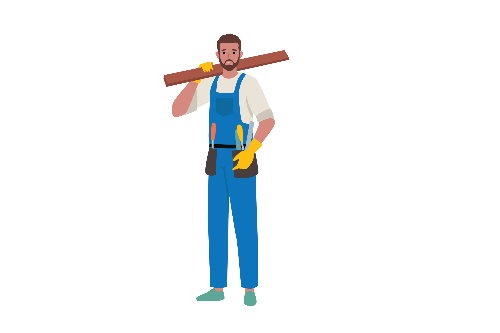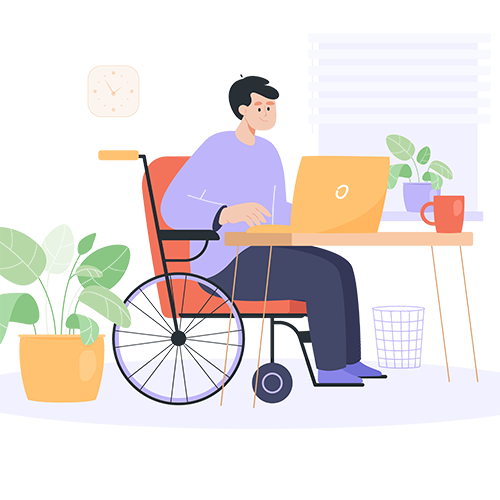Bob is a 25 year old qualified carpenter who is a subcontractor to various builders. He is earning $90,000 per annum gross but pays $20,000 in expenses, most which are fixed expenses i.e. a leased car and leased equipment. Bob rents an apartment and spends the rest of his earnings of $70,000 on living and entertainment expenses. Bob has little in the way of savings.
What if Bob doesn’t have insurance?
Bob has a car accident and is hospitalised for one month. He then faces a long and painful rehabilitation process of 12 months to try to regain the use of one of his arms.
Even with private health insurance there are medical bills to be paid particularly for physiotherapy and rehabilitation sessions. Bob has no income for 13 months but must continue to pay his lease costs of $20,000 per annum. What little money Bob receives in disability payments from the government won’t cover his rental costs.
Bob has to move back home and borrow money from his parents. If he doesn’t recover the use of his arm Bob will never be able to work as a carpenter again and will have to retrain into a potentially lower paid job.

What Insurances could Bob have taken out?

1. Income Protection
Bob could have taken out income protection for 70% of his net income of $70,000, which would provide him with a monthly benefit of $4,083 while he was unable to work.
As he had no sick leave or savings to fall back on ideally Bob should have the shortest waiting period of 14 days but this is also the most expensive. Other alternatives would be to take out a longer 30 day waiting period but include an accident option which would begin payments from day one if he suffered an accident, or to take out a “Plus” product which includes a benefit payable within the waiting period if he is confined to bed.
Due to his youth Bob should ideally take out an age 65 benefit period, as if his injury proved to be permanent and he could not work again he would then be paid a benefit for the remaining 40 years of his income earning capacity. He should check for what period the policy will be “own occupation”, as once the policy reverts to “any occupation” he may then have return to work in another occupation he is suited to by his training, education or experience.
Due to his age Bob may consider a level premium rather than a stepped premium as the difference in price between the two at his age may be small, but over the long term he could pay considerably less if he retains his policy long term.
Other desirable features/benefits:
- Claims Escalation/Indexation – so when on claim payments keep pace with inflation
- Specified injury benefit – pays a set benefit for certain fractures or injuries
- Lump sum TPD benefit – pays a lump sum in event of a total and permanent disability
- Future guaranteed insurability – allow increases to cover for certain life events
- Severity benefit – increases benefit by 33% if serious disability is suffered
- Rehabilitation benefit – incentive payments to retrain in another occupation

2. Business Expenses cover
As his income protection will not cover his $20,000 of fixed expenses Bob could have taken out 12 months cover for this so that he did not have to meet these expenses out of the $4,083 monthly benefit he received from his income protection

3. Total and Permanent Disability (TPD) / Life insurance
Bob could have taken out an amount of say $500,000 of TPD cover so that if he was totally and permanently disabled and unable to work again he would receive a lump sum to supplement his income protection payments. This could be used to pay medical expenses, home modifications and even to purchase a home of his own.
Although Bob did not yet have any dependants to leave a death benefit to, taking out the same amount of life cover while healthy would provide protection against an unforeseen event causing his health to deteriorate in the future and making him uninsurable.
Other desirable features:
Future guaranteed insurability – by including this option Bob will be able to increase his life and TPD cover on the occurrence on certain life events eg marriage, taking out a mortgage, having children, even if his health has deteriorated.
Own Occupation TPD – a more expensive option than Any Occupation TPD but would still pay a lump sum benefit if Bob could no longer be a carpenter but could return to work in a lower paid job.
What if Bob had these insurances?
If Bob had an income protection policy with a 30 day waiting period he would normally not be entitled to receive payments until 30 days after his injury (or later depending on insurer processing dates) and so he would might have to draw down on savings or seek support from his family for this period.
However Bob’s income protection policy included a Bed Confinement/Nursing Care benefit payable within the waiting period, so he received a benefit while he was hospitalised for the first month and then his normal payments commenced. After 30 days Bob also started receiving benefits from his Business Expenses policy to cover his lease payments.
As a consequence Bob was able to stay in his apartment and be self sufficient while he recovered. As Bob’s income protection policy was own occupation for the first two years Bob continued to receive payments from the insurer while he was unable to perform the duties as a carpenter. Bob’s policy also included a rehabilitation benefit which meant that if Bob wanted to retrain in another trade the insurer would pay the costs of this.
If Bob’s injury was permanent and he was not capable of working again in any capacity and his income protection policy included the lump sum TPD option he could convert his stream of future income payments to a tax free lump sum. If Bob had taken out separate TPD insurance he would receive a lump sum of $500,000 which he could use to supplement the ongoing payments from his income protection policy.
Please note that the above case study is provided for illustrative purposes only. This is general advice only and does not take into account your particular circumstances, such as your objectives, financial situation and needs. If you would like advice on your personal situation please go to Get Advice.
